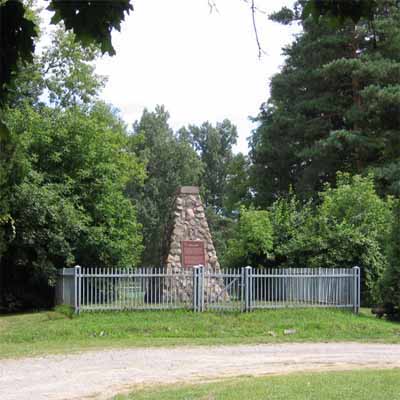Fort Norfolk National Historic Site of Canada
Turkey Point, Ontario

General view
© Parks Canada Agency/Agence parcs Canada, 2005.
Address :
76 Old Hill Road, Turkey Point Provincial Park, Turkey Point, Ontario
Recognition Statute:
Historic Sites and Monuments Act (R.S.C., 1985, c. H-4)
Designation Date:
1925-05-15
Dates:
-
1814 to 1815
(Construction)
-
1823 to 1823
(Significant)
-
1795 to 1795
(Significant)
Event, Person, Organization:
-
War of 1812
(Event)
-
Lieutenant-Governor John Graves Simcoe
(Person)
-
General Henry Procter
(Person)
Other Name(s):
-
Fort Norfolk
(Designation Name)
-
Turkey Point
(Plaque name)
Research Report Number:
2009-SDC-CED-071
DFRP Number:
56535 00
Plaque(s)
Existing plaque: Turkey Point Provincial Park 76 Old Hill Road, Turkey Point, Ontario
As early as 1798, Lieutenant Governor Simcoe planned to fortify this point. By 1813 nothing had yet been done, and following Proctor's retreat from Amherstburg the British decided to construct a navy year and covering fort here. Difficulties in supplying the post, together with the unsuitablility of the location led to abandonment of the project after only a blockhouse and part of a palasade had been built.
Description of Historic Place
Fort Norfolk National Historic Site of Canada is located at the entrance to Turkey Point Provincial Park golf course, bounded by the eastern edge of Old Hill Road, near Lake Erie. The site consists of mixed landscape features and foliage, and is surrounded by the vast lawns of the nearby golf course. There are no known extant remains of Fort Norfolk; however, since its designation the site has been the subject of several archival research projects. Official recognition refers to the polygon of land bounded by the eastern edge of Old Hill Road in Turkey Point, Ontario.
Heritage Value
Fort Norfolk was designated a national historic site of Canada in 1925 because: it was the site of a British military and naval post between 1814 and 1815. [Minutes / Plaque Text, 1926]
In 1795, Lieutenant-Governor John Graves Simcoe selected the Turkey Point area for the construction of a fort and naval station. During the War of 1812, the area became of strategic interest to the British, who on the orders of General Henry Procter, built a blockhouse and a partial palisade on the slope above Turkey Point. From 1814 until 1815, Fort Norfolk served as a British military and naval post, but when hostilities ceased, the project was abandoned. By 1826, the fort was in such a state of decay that the naval and military developments were relocated northeast to the Grand River.
Sources: Historic Sites and Monuments Board of Canada, Minutes, 1925; 1926; December 2009.
Character-Defining Elements
Key elements that contribute to the heritage character of the site include: its strategic location on a bluff bordered by two ravines just east of Old Hill Road, which descends to Turkey Point; its setting amongst the wooded landscape, surrounded by the lush rolling lawns; the integrity of any surviving or as yet unidentified archaeological resources associated with the War of 1812, which maybe found within the site in their original placement and extent, including trenches; the integrity of any surviving or as yet unidentified archaeological resources associated with British naval and military posts, which maybe found within the site in their original placement and extent, including remnants of a palisade and blockhouse. viewscapes from the site, south on Lake Erie.